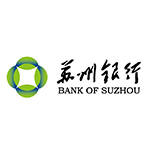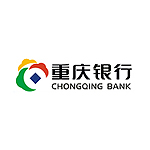QILU BANK(601665)
Search documents
24家A股银行将现金分红超2600亿元
2 1 Shi Ji Jing Ji Bao Dao· 2025-11-24 12:56
Core Viewpoint - The recent surge in stock prices of major Chinese banks is driven by their mid-term dividend announcements, with a total cash dividend amounting to 2637.90 billion yuan for 2025, indicating significant investment potential in the banking sector [2][4]. Dividend Announcements - As of November 24, 2025, 24 A-share listed banks have disclosed their mid-term dividend plans, with a total cash dividend of 2638 billion yuan [4]. - Notably, seven banks, including Industrial Bank, Changsha Bank, and Ningbo Bank, are implementing mid-term dividends for the first time since their listings [2]. - The six major state-owned banks are expected to distribute over 2046 billion yuan in dividends [5]. Dividend Yield - The average dividend yield for listed banks as of November 24 is 4.48%, with 12 banks yielding over 5% and 26 banks exceeding 4% [6]. - Specific banks like Bank of Communications and China Construction Bank have dividend yields of 4.18% and 3.93%, respectively [6]. Shareholder and Executive Buybacks - There has been a notable increase in share buybacks by major shareholders and executives of listed banks, signaling positive market sentiment [8]. - For instance, Chengdu Bank's major shareholders have collectively bought approximately 34.25 million shares, investing 6.11 billion yuan from August 27 to November 21 [8]. - Nanjing Bank reported that foreign shareholder BNP Paribas increased its stake by over 128 million shares, raising its ownership to 18.06% [9]. Overall Market Sentiment - The banking sector has seen a net increase in holdings exceeding 9 billion yuan, with significant buybacks from shareholders and executives across multiple banks [10]. - The proactive buyback activities reflect confidence in the banks' future strategies and growth prospects, with the banking sector ranking second in shareholder buybacks this year, only behind the transportation sector [10].
24家A股银行将现金分红超2600亿元
21世纪经济报道· 2025-11-24 12:38
Core Viewpoint - The recent surge in stock prices of major banks in China is driven by their mid-term dividend announcements, with a total cash dividend amounting to 2638 billion yuan for 2025, indicating significant value potential in the banking sector [2][3][4]. Dividend Announcements - As of November 24, 2025, 24 A-share listed banks have disclosed their mid-term dividend plans, with a total cash dividend of 2638 billion yuan, including first-time mid-term dividends from seven banks [2][4]. - Notably, Wuxi Bank announced a cash dividend of 0.11 yuan per share, totaling 2.41 billion yuan, with the ex-dividend date on November 25, 2025 [4]. - Hangzhou Bank plans to distribute a cash dividend of 0.38 yuan per share, amounting to 27.55 billion yuan, reflecting a 24.10% increase from the previous year [4]. Dividend Yields - The average dividend yield for listed banks as of November 24 is 4.48%, with 12 banks yielding over 5% and 26 banks over 4% [5]. - Major banks like Bank of Communications and Agricultural Bank of China have lower yields, ranging from 3% to 4.18% [5]. Shareholder and Executive Buybacks - There has been a notable increase in share buybacks by major shareholders and executives, signaling positive market sentiment [7][8]. - For instance, Chengdu Bank's major shareholders increased their holdings by approximately 34.24 million shares, investing 611 million yuan [7]. - The banking sector has seen a total of 126.30 billion yuan in buybacks this year, ranking second among industry sectors [8]. Market Performance and Outlook - The banking sector has experienced a net increase in holdings exceeding 90 billion yuan, with significant support for stock prices from shareholder buybacks [6][9]. - Analysts suggest that the upcoming long-term capital allocation period at year-end will further enhance the market performance of bank stocks [9].
齐鲁银行11月21日获融资买入7225.11万元,融资余额14.97亿元
Xin Lang Cai Jing· 2025-11-24 01:40
11月21日,齐鲁银行跌2.13%,成交额3.75亿元。两融数据显示,当日齐鲁银行获融资买入额7225.11万 元,融资偿还4477.66万元,融资净买入2747.45万元。截至11月21日,齐鲁银行融资融券余额合计15.01 亿元。 分红方面,齐鲁银行A股上市后累计派现48.72亿元。近三年,累计派现32.05亿元。 机构持仓方面,截止2025年9月30日,齐鲁银行十大流通股东中,香港中央结算有限公司位居第十大流 通股东,持股1.28亿股,相比上期减少87.65万股。 责任编辑:小浪快报 融资方面,齐鲁银行当日融资买入7225.11万元。当前融资余额14.97亿元,占流通市值的4.08%,融资 余额超过近一年80%分位水平,处于高位。 融券方面,齐鲁银行11月21日融券偿还4400.00股,融券卖出1.40万股,按当日收盘价计算,卖出金额 8.34万元;融券余量75.42万股,融券余额449.50万元,超过近一年50%分位水平,处于较高位。 资料显示,齐鲁银行股份有限公司位于山东省济南市历下区经十路10817号,成立日期1996年6月5日, 上市日期2021年6月18日,公司主营业务涉及公司银行业务、个人银 ...
银行周报(2025/11/17-2025/11/21):多家银行股东及管理层踊跃增持-20251123





GUOTAI HAITONG SECURITIES· 2025-11-23 12:42
Investment Rating - The report assigns an "Accumulate" rating for the banking sector [5]. Core Insights - Since the beginning of the year, many banks' shareholders and executives have actively increased their holdings, ranking first among 31 industries in terms of the amount of increase. Notable banks with significant increases include Nanjing Bank, Suzhou Bank, Everbright Bank, Shanghai Pudong Development Bank, and Chengdu Bank [2][5]. - The net amount of shareholding changes in the banking sector is approximately 9.03 billion, with an increase of about 12.63 billion, ranking second only to the transportation industry. The decrease amounts to about 3.60 billion [5]. - More than half of the banks have disclosed plans for major shareholders or executives to increase their holdings, with the top three banks in terms of increased amounts being Nanjing Bank (7.38 billion), Suzhou Bank (1.74 billion), and Everbright Bank (1.24 billion) [5]. Summary by Sections Related Reports - The report references several related reports on banking, including topics such as mid-term dividend acceleration and credit issuance tracking [4]. Industry and Company Dynamics Tracking Major News - The People's Bank of China announced the LPR rates for one year and five years remain unchanged at 3.0% and 3.5%, respectively [11]. - Recent surveys indicate that operating loan rates have dropped significantly, with some banks offering rates below 2.5% [11]. Major Announcements - Wuxi Bank plans to implement a mid-term dividend of 0.11 yuan per share, totaling 241 million [12]. - Nanjing Bank's major shareholder, France's BNP Paribas, increased its holdings by 128 million shares, representing 1.04% of the total share capital [12]. Weekly Data Tracking - During the period from November 17 to November 21, the banking sector experienced a decline of 0.87%, outperforming the CSI 300 index by 2.90 percentage points [5][14]. - The average interest rate for the six-month national large banks and joint-stock banks increased by 7 basis points to 0.68% [5].
真金白银出手!上市银行,增持潮起!
证券时报· 2025-11-23 08:44
Core Viewpoint - A-share listed banks are experiencing a wave of share buybacks from shareholders and executives, indicating confidence in the long-term prospects of these banks amidst market volatility [1][3][5]. Group 1: Shareholder and Executive Buybacks - Recently, several listed banks, including Nanjing Bank and Chengdu Bank, announced significant share buybacks by major shareholders and executives, reflecting a trend that began in October with other banks like Xiamen Bank and Qilu Bank [3][4]. - Chengdu Bank reported that its two major shareholders invested approximately 611 million yuan to buy back nearly 34.247 million shares, with plans for further purchases totaling between 700 million and 1.4 billion yuan [3][4]. - Nanjing Bank's largest shareholder, BNP Paribas, increased its stake by approximately 12.8 million shares, raising its total holding from 17.02% to 18.06%, marking a new high for its ownership [4]. Group 2: Market Performance and Analyst Insights - The banking sector has shown resilience, with 17 bank stocks reporting positive returns over the past month, including China Bank with a 13.74% increase [9]. - Despite recent gains, the overall valuation of bank stocks remains low, with a median price-to-book ratio of about 0.6, indicating potential for further appreciation [9]. - Analysts from various institutions reaffirmed the investment opportunities in the banking sector, highlighting the appeal of high dividend yields and low valuations as key factors for future investments [10][11]. Group 3: Confidence in Long-term Value - The increase in share buybacks by executives and major shareholders is seen as a signal of confidence in the banks' long-term value and a strategy to stabilize market sentiment [7]. - The shift in buyback activity from low-price periods to times of rising stock prices suggests a proactive approach to managing market perceptions and valuations [7].
区域银行频获增持,银行ETF天弘(515290)规模近62亿元,机构:银行营收端增速有望持续改善
2 1 Shi Ji Jing Ji Bao Dao· 2025-11-19 03:31
Group 1 - The A-share market showed a positive trend on November 19, with the banking index rising by 0.93% [1] - The Tianhong Bank ETF (515290) recorded a trading volume exceeding 35 million yuan, indicating strong investor interest [1] - Major banks such as Bank of China, Everbright Bank, and Postal Savings Bank saw their stock prices increase by over 2% [1] Group 2 - As of November 18, the Tianhong Bank ETF had a total scale of nearly 6.2 billion yuan, covering 42 listed banks across various categories [2] - There has been significant insider buying in regional banks this year, with several banks announcing plans for share buybacks in November [2] - Securities firms noted that the profit growth rate for listed banks improved in Q3, driven by reduced provisioning, stabilized net interest margins, and improved wealth management income [2]
地方上市银行高管频频增持自家银行股份
Zheng Quan Shi Bao· 2025-11-18 18:13
Core Viewpoint - The announcement from Hu Nong Commercial Bank indicates significant insider buying by top executives, reflecting confidence in the bank's future performance and aligning with a broader trend of regional banks experiencing similar increases in executive and institutional shareholdings [1]. Group 1: Executive Purchases - Five senior executives of Hu Nong Commercial Bank, including the president and several vice presidents, purchased a total of 259,100 shares from November 13 to November 17, 2025, at prices ranging from 9.02 to 9.08 yuan [1]. - This trend of executive share purchases is not isolated, as other regional banks such as Nanjing Bank, Wuxi Bank, and Suzhou Bank have also seen similar actions from their management teams [1]. Group 2: Institutional Purchases - Qingdao Bank reported that its major shareholder, Qingdao Guoxin Financial Holdings Group Co., Ltd., increased its holdings through the Hong Kong Stock Connect, raising its total stake to 15.42%, making it the largest shareholder of the bank [1]. - In addition, Su Nong Bank's executives plan to purchase at least 1.8 million yuan worth of A-shares within six months starting from November 11, 2025 [1]. - Qilu Bank disclosed that its management has already purchased approximately 3.15 million yuan worth of shares, achieving 90% of its planned increase since announcing its buyback plan in mid-September [1].
赋能外贸企业“轻装远航”,齐鲁银行如何让跨境人民币越来越好用?
Qi Lu Wan Bao· 2025-11-18 01:38
政策精准滴灌 打通落地"最后一公里" 在全球经济一体化浪潮的推动下,跨境金融活动正以前所未有的速度蓬勃展开。人民币作为国际货币的 地位日益凸显,已然是全球经济舞台的主角。 滨州某企业主营原油采购及后续加工销售,在原油进口环节存在跨境付汇需求。因在主结算行有服务堵 点,公司有意更换结算行,但同时又顾虑更换结算行会影响现有业务效率。"瞻前顾后"焦虑之下,齐鲁银行 优质企业跨境人民币结算便利化方案向其伸出"橄榄枝"。 为将优质企业跨境人民币结算便利化政策落到实处,齐鲁银行建立"准入有标准、动态有调整"的优质企 业管理机制。凭优质企业提交的电子收付款指令,即可直接办理货物贸易及服务贸易跨境人民币结算,无 需事前、逐笔提交真实性证明材料,真正实现"数据多跑路、企业少跑腿"。 齐鲁银行通过解析客户业务模式及汇款路径,推动企业实现结算币种转换。某国有大宗商品贸易企业,因 汇率波动使其外汇风险敞口管理难度与成本显著增加,齐鲁银行为该企业量身定制跨境人民币"结算+融 资"一体化方案,从源头上规避汇率波动风险,并降低汇兑成本,凭借全方位、高效的服务帮助客户解决实 际问题,赢得了客户的信任,今年以来,该企业累计实现跨境人民币收付量 ...
年内十余家上市银行 获股东增持
Zhong Guo Ji Jin Bao· 2025-11-17 07:31
Group 1 - Over 10 listed banks have seen significant shareholding increases from shareholders and executives this year, indicating a broader scale of buybacks compared to previous years [1][2] - The increase in shareholding is characterized by a diverse range of stakeholders and a concentration of banks in specific regions [1][3] - This year's buyback activity is occurring during a market uptrend, contrasting with previous years when buybacks were initiated after stock prices fell below net asset value, signaling a shift from defensive to proactive investment strategies [1][4] Group 2 - Notable examples include Changshu Bank, which saw an increase of 561.93 million shares, raising its shareholder's stake to 3.98%, and Qilu Bank, where executives have collectively increased their holdings by approximately 315,000 yuan [2][3] - The participation of local state-owned enterprises has notably increased, with foreign investments also contributing, such as BNP Paribas increasing its stake in Nanjing Bank from 16.14% to 17.02% [3][4] - The overall performance of the banking sector has improved, with 42 A-share listed banks reporting over 4.3 trillion yuan in revenue for the first three quarters, and more than 60% of these banks showing year-on-year revenue growth [4]
齐鲁银行跌2.10%,成交额2.23亿元,主力资金净流入2190.11万元
Xin Lang Zheng Quan· 2025-11-17 05:35
Core Viewpoint - Qilu Bank's stock price has experienced fluctuations, with a current price of 6.07 CNY per share, reflecting a year-to-date increase of 14.01% but a recent decline of 2.10% in the last five trading days [1] Financial Performance - As of September 30, Qilu Bank reported a net profit of 3.963 billion CNY for the first nine months of 2025, marking a year-on-year growth of 15.14% [2] - The bank's cumulative cash distribution since its A-share listing amounts to 4.872 billion CNY, with 3.205 billion CNY distributed over the past three years [3] Shareholder Information - The number of shareholders for Qilu Bank reached 56,100, an increase of 30.16% compared to the previous period, while the average circulating shares per person decreased by 7.07% to 109,647 shares [2] - Among the top ten circulating shareholders, Hong Kong Central Clearing Limited holds 128 million shares, a decrease of 876,500 shares from the previous period [3] Business Overview - Qilu Bank, established on June 5, 1996, and listed on June 18, 2021, operates primarily in corporate banking (59.83% of revenue), personal banking (22.81%), and fund operations (16.05%) [1] - The bank is categorized under the banking sector, specifically as a city commercial bank [1]



